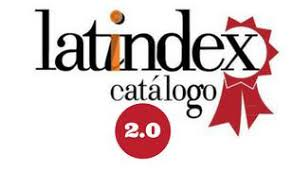Landscape mapping: a tool for inventory and ranking of tourist resources in the southern end of patagonia
Keywords:
landscape unit, tourism resources, Southern PatagoniaAbstract
Abstract
Landscape units defined for the southeast portion of the continental Patagonia Argentina are presented, which have been defined with particular reference to their physical features, thay are the main elements of differentiation in the area. This systematization aims to inventory and prioritize tourism resources of the region and the scenic assessment of each landscape.
Each unit was digitized on screen on Landsat ETM+ satellite image of the area, which has a spatial resolution appropriate to the worksheet scale 1: 250,000. In the different units there have been inventoried tourist interest resources, especially associated with non-conventional modalities: scientific, rural, bird watching, fishing, among others.
Downloads
References
BOCKHEIM, J., CORONATO, A., RABASSA, J., ERCOLANO, B. Y PONCE, J. (2009). Relict sand wedges in southern Patagonia and their stratigraphic and paleoenvironmental significance. Quaternary Science Reviews 28.1188–1199
BOLÓS, M. (1992). Manual de Ciencia del Paisaje. Teoría, Métodos y Aplicaciones, Colección Geográfica. Pp273. Masson, Barcelona.
BORRERO, L., MANZI, L. L´HEUREUX, G. MARTIN, F. FRANCO, N. CHARLIN, J. BARBERENA R. Y CAMPÁN. P. (2004). Arqueología del campo de lava Pali Aike, Argentina. Resúmenes XV Congreso Nacional de Arqueología Argentina. p. 368. Río Cuarto.
BORRERO, L. Y CHARLIN J. (2010) Arqueología de Pali Aike y Cabo Vírgenes (Santa Cruz, Argentina).. 1a ed. - Buenos Aires Dunken, 2010. 152 p.
CABALLERO, J. (2000). Hidrografía y recursos hídricos. En: García, A. y Mazzoni, E. (dir). El gran libro de la provincia de Santa Cruz. 116-139. Milleniun Ediciones y Alfa Centro Literario. Madrid.
CODIGNOTTO, J. (1990). Evolución en el cuaternario alto del sector de costa y plataforma submarina entre Río Coig, Santa Cruz y Punta María, Tierra del Fuego. Revista de la Asociación Geológica Argentina XLV (1-2): 9-16.
COLLANTES, M. Y FAGGI, A.M. (1999). Los humedales del sur de Sudamérica. En: A.I. Malvares (ed.), Tópicos sobre humedales subtropicales y templados en Sudamérica. UNESCO. Montevideo: 15-25.
CONVENIO EUROPEO DEL PAISAJE (2000), Consejo de Europa, Florencia.
CORBELLA H., POMPOSIELLO, C., MALAGNINO, E., TRINCHERO, E., ALONSO, S., CHELOTTI, L., DIAZ T. Y FIRPO. L. (1990.) Volcanismo lávico y freato magmático postglacial asociado al campo de fracturación austral, Provincia de Santa Cruz, Argentina. XI Cong. Geol. Arg., Actas 2:383-393.
CORBELLA, H. (2002). El campo volcano-tectónico de Pali Aike. En: Haller, M. (Ed). Geología y recursos naturales de Santa Cruz. Relatorio del XV Congreso Geológico Argentino. El Calafate, I.18:258-301. Buenos Aires.
CORONATO A; CORONATO, F., MAZZONI, E. Y VAZQUEZ. M. (2008). The physical geography of Patagonia and Tierra del Fuego.13-56. En Rabassa, J.(Edit):The Late Cenozoic of Patagonia and Tierra del Fuego. Developments on
Quaternary Science 11.pp 513 Elsevier, Amsterdam.
CORONATO, A. Y RABASSA, J. (2011). Pleistocene Glaciations in SouthernPatagonia and Tierra del Fuego.715-727.En J. Ehlers, P.L. Gibbard and P.D. Hughes (eds): Quaternary glaciations, extend and chronology. Developments in Quaternary Science 15. pp 1108. Amsterdam.
DE NEGRIS, M.E. Y SENATORE, M.X. (2008). Arqueología histórica en los confines del imperio. La ciudad del Nombre de Jesús (Estrecho de Magallanes, Siglo XVI). Telar 6:129-144..
ERCOLANO, B., (2010). Evolución de la costa comprendida entre el río Gallegos y Chorrillo de los Frailes. Tesis Doctoral, Facultad de Ciencias Exactas y NaturalesUBA. Inédita .pp244 . Buenos Aires
ERCOLANO, B., MAZZONI E. Y RABASSA. J. (1997).Fósil edge-edges and other periglacial structures near Río Gallegos, Argentina, Southernmost South America.7th International Conference on Permafrost.Abstracts. Yellowknife, Canadá.
FERRARI, S., ALBRIEU C. Y GANDINI.P. (2002).Importance of the Río Gallegosestuary, Santa Cruz, Argentina, for migratory shorebirds.Water Study Group Bull, 99:35-40.
FERRARI, S., IMBERTI S. Y ALBRIEU. C. (2005). Áreas de importancia para la conservación de las aves en Santa Cruz. En: Di Giácomo, A. S. (Ed). Áreas de importancia para la conservación de las aves en Argentina,sitios prioritarios para la conservación de la biodiversidad. 412-414. Asociación ornitológica de La Plata. Buenos Aires.
LEÓN, R., D. BRAND, M. COLLANTES, J. PARUELO Y A. SORIANO (1998). Grandes Unidades de vegetación de la Patagonia extra andina. Ecología Austral 8:125-144. Buenos Aires.
LUQUE, E. (1995). Reserva Provincial Cabo Vírgenes (reseña histórica). Dirección de fauna silvestre, Consejo Agrario Provincial, Santa Cruz.
MATEO RODRIGUEZ, J. Geografía de los Paisajes. Universidad de La Habana, Cuba. 2002. 436 pp. http://kimerius.com/app/download/5784696079/Geograf%C3%ADa+de+los+paisajes+naturales.pdf. Consulta: 17/06/14
MATEO RODRÍGUEZ, J, DA SILVA, E. y BRITO CAVALCATI, A.(2007). Geoecología das paisagens. Fortaleza Ediciones, U.F.C., Fortaleza.
MAZZONI, E. (2001). Distribución espacial y caracterización geomorfológica de “bajos sin salida” de la Patagonia Austral Extracordillerana. Anales Instituto de la Patagonia 29:5-24 Serie Ciencias Naturales. Universidad de Magallanes, Punta Arenas, Chile.
MAZZONI, E., VAZQUEZ, M. Y RUIZ POSSE.E. (2002). Dinámica geomorfológica de depósitos eólicos asociados a “bajos sin salida” de la Patagonia austral. Pp. 165 – 176. Actas IVº Jornadas Nacionales de Geografía Física.
Universidad Nacional de Mar del Plata.
MAZZONI, E. Y VAZQUEZ. M. (2004). Ecosistemas de mallines y paisajes de la Patagonia Austral (Provincia de Santa Cruz).INTA – GTZ. Buenos Aires. pp 63.
MAZZONI, E. (2012). Geografía física a escala de detalle: patrones geomorfológicos, edáficos y de vegetación mediante imágenes de alta resolución espacial en la estepa patagónica. Resumen. IX Jornadas Nacionales de Geografía Física. p.16. UNS, Bahía Blanca.
MEGLIOLI, A. (1992). Glacial geology and chronology of southernmost Patagonia and Tierra del Fuego, Argentine and Chile.Ph.D. Diss., Lehigh University, PA, pp 216.
MERCER, J. (1976) .Glacial history of Southernmost South America. QuaternaryResearch. 6, 125–166.
NOGUÉ, J. Y VELA, J. (2011). La dimensión comunicativa del paisaje. Una propuesta teórica y aplicada. Rev. deGeografía Norte Grande, 49:25-34
OLLIER, C. (1967). Maars, their characteristics, varieties and definition.Bull. Volcanol.,31: 45-73
RABASSA, J. 2008. Late Cenozoic Glaciations in Patagonia and Tierra del Fuego.151-204 En: Rabassa, J. (ed.) The Late Cenozoic of Patagonia and Tierra del Fuego. pp 513 .Developments in Quaternary Science.Elsevier. Amsterdam
RAMOS, V. (1999). Las provincias geológicas del territorio argentino. Geología Argentina, Anales 29 (3):41-96. Instituto de Geología y Recursos Minerales. Buenos Aires.
RUSSO, A., FLORES, M.A. Y DI BENEDETTO. H. (1980). Patagonia Austral Extrandina. En: Haller, M. (Ed.). Geología Regional Argentina II:1431-1462. Academia Nacional de Ciencias. Córdoba.
SCHORR, A. Y SERRI, M.F. (2008). Zonas agroeconómicas homogéneas Patagonia Sur. INTA. Buenos Aires. pp. 97
URIBE, P. Y ZAMORA, E. (1981). Origen y Geomorfología de la Punta Dungeness, Patagonia. Anales del Instituto de la Patagonia 12: 144-158.
Downloads
Published
How to Cite
Issue
Section
License
Copyright (c) 2015 Boletin GeográficoTransfer of rights and data processing
The acceptance of an article for publication in the Journal Geographic Bulletin implies the cession of the rights of printing and reproduction, by any means and means, of the author in favor of the Department of Geography of the National University of Comahue, which will not reject any request reasonable for the authors to obtain permission to reproduce their contributions. The total or partial reproduction of the works published in the Geographic Bulletin must be done citing the origin, otherwise, the copyright is violated.
Likewise, it is understood that the concepts and opinions expressed in each work are the sole responsibility of the author, without being responsible or in solidarity, necessarily, neither the editorial staff nor the editorial staff.
It is the responsibility of the authors to be able to provide interested readers with copies of the raw data, procedure manuals, scores and, in general, relevant experimental material.
Likewise, the Management of the journal guarantees the appropriate treatment of personal data
COPYRIGHT TRANSFER FORM

















 Journal of the
Journal of the 